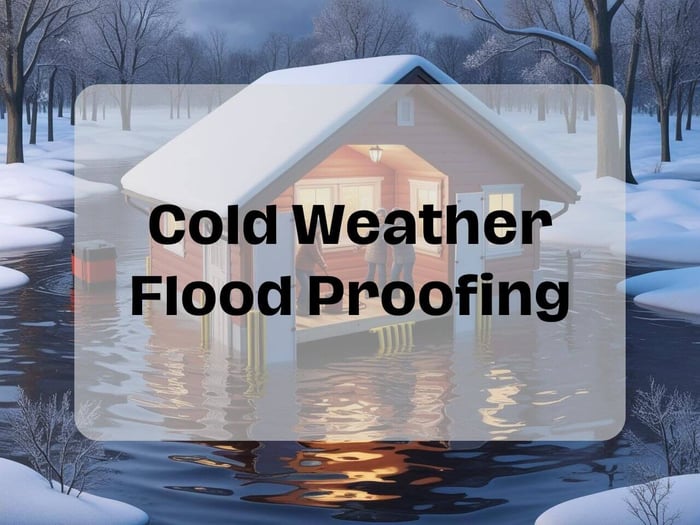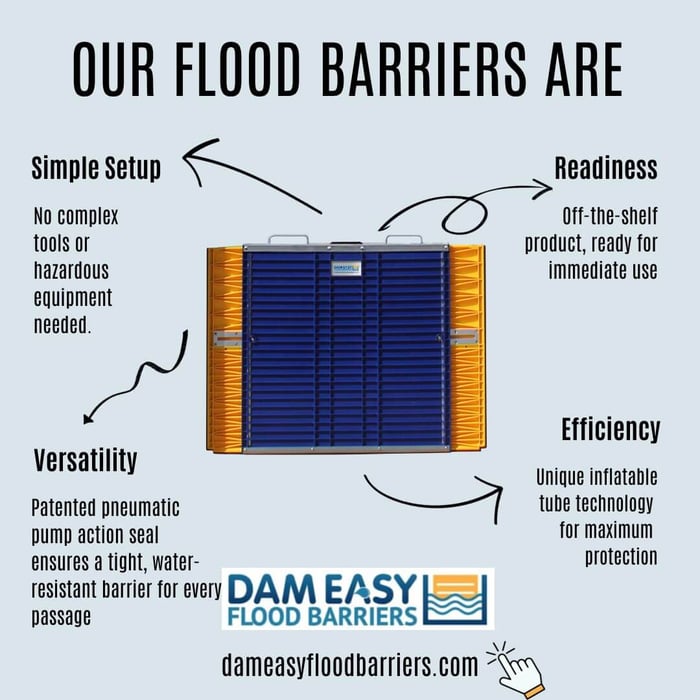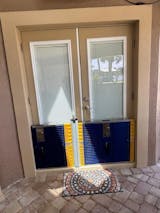Table of Contents
- Regional Considerations: Tailoring Your Approach to Local Needs
- Northern Regions (Bismarck, ND; Montana; Northern Plains)
- Mountainous and High-Elevation Areas (Rockies, White Mountains, New Hampshire)
- Mid-Atlantic and Eastern U.S. Regions (Eastern U.S.; Virginia; Appalachia; Ohio; West Virginia)
- Southern and Central Regions (Oklahoma, Central Texas, Arkansas, Mississippi, Alabama, and Atlanta)
- Urban and Industrial Areas (Detroit, Greenwood, Interstate 80 Corridors)
- Conclusion
For those living in regions prone to severe winter weather—such as Bismarck, North Dakota; Montana; and even areas around the Rockies and Northern Plains—it’s not enough to simply have flood barriers on hand. You must ensure they’re ready to perform when temperatures plunge. Here’s a comprehensive guide to winterizing your flood barriers:
1. Inspect Regularly
Before the first frost hits, conduct a thorough inspection of your flood barriers. Look for any signs of wear and tear, such as cracks, fraying seams, or signs of previous damage. In places like Michigan or Nebraska, where harsh winters are the norm, early detection of any issues can save you a lot of hassle later on.
Tip: Keep a checklist of key areas to inspect. This might include the barrier’s edges, inflation valves (if applicable), and any anchoring points that secure the barrier in place.
2. Clean Thoroughly
Dirt, debris, and even salt (used on icy roads in cities like Detroit or Atlanta) can accumulate on your barriers, potentially weakening their material. A gentle wash with a mild detergent can help remove these contaminants. Be sure to rinse thoroughly, as any leftover residue could lead to material degradation when temperatures drop.
Tip: Use a soft brush and avoid harsh chemicals that might damage the barrier’s surface.
4. Store Properly When Not in Use
For those times when flood risks are minimal, or if you’re in a region like Sierra Madre, California, where flooding might be less frequent but occasional heavy storms still occur, proper storage is key. If you have the option to store your flood barriers indoors or in a climate-controlled environment, do so. Keeping them in a dry, temperate space will prolong their lifespan and maintain their effectiveness.
Tip: Use heavy-duty storage containers or protective covers to shield the barriers from dust and accidental damage during off-season months.
بوابة السد floodcontrol النهائي

$949.00
دام ايسي ® بوابة السد ضد الفيضانات الفيضانات أصبحت أكثر انتشارا في جميع أنحاء العالممرة واحدة في القرن الماضي ، أصبح الاتجاه الموسمي الذي يجب على صاحب البيت هذا هو السبب في أنك بحاجة إلى هذا السد من… Read More
5. Reinforce Anchoring Systems
Cold weather can affect not just the barrier itself, but also its anchoring systems. Freezing temperatures can make metal components brittle and prone to failure. Check the anchors, bolts, and any other securing devices for signs of rust or fatigue. In regions like Wyoming or the White Mountains in New Hampshire, where winter conditions can be extreme, reinforcing these systems might involve replacing older parts with newer, more resilient models.
Tip: If you notice any compromised anchors, consult a professional for a replacement to ensure maximum stability during heavy floods or ice events.
6. Consider Temperature-Specific Adjustments
Some flood barriers are designed with adjustable features that account for temperature fluctuations. In areas like the Canadian border or parts of North Dakota, where temperatures can swing dramatically within a short period, ensure that your barriers are set to operate effectively across these ranges. This might involve adjusting the inflation pressure in inflatable barriers or ensuring that any seals are adequately flexible.
Tip: Refer to the manufacturer’s guidelines for temperature-specific adjustments, and don’t hesitate to reach out to their support team if you have any questions.
7. Schedule Regular Maintenance
Winter isn’t the time to be caught off guard. In addition to seasonal checks, schedule regular maintenance throughout the year to ensure your flood barriers remain in top condition. This is especially important in areas with a history of extreme weather events, such as Louisville, Kentucky, or along the Cumberland and Red Rivers in Tennessee and Virginia.
Tip: Establish a maintenance calendar and stick to it. Regular upkeep not only ensures performance but can also extend the life of your investment.
Regional Considerations: Tailoring Your Approach to Local Needs
Flooding and extreme weather don’t play favorites—they can affect any region. However, the specifics of what you need to do can vary widely based on your location. Here’s how homeowners and business owners in various parts of the country can tailor their flood barrier strategies:
Northern Regions (Bismarck, ND; Montana; Northern Plains)
In these areas, extreme cold is a constant challenge. The polar vortex events that hit as far back as Bismarck, ND, and throughout Montana demand that flood barriers not only hold back water but also resist the damaging effects of freezing temperatures. Regular inspection and maintenance are a must, as even a small crack can lead to catastrophic failure when water freezes and expands.
Mountainous and High-Elevation Areas (Rockies, White Mountains, New Hampshire)
Mountain regions face unique challenges such as rapid snowmelt and avalanches. For example, the Mount Washington Avalanche Center in New Hampshire is a constant reminder of how nature can suddenly turn fierce. In these regions, flood barriers need to be both robust and adaptable. Extra reinforcement on anchoring systems and protective coatings that can handle both UV exposure and freezing conditions is essential.
Mid-Atlantic and Eastern U.S. Regions (Eastern U.S.; Virginia; Appalachia; Ohio; West Virginia)
In the Eastern U.S., weather patterns can vary from heavy rains to sudden ice storms. Cities along major waterways—like those near the Cumberland River and in areas such as Clarksville, Tenn., and Bowling Green, Ky.—benefit immensely from flood barriers that can be quickly deployed. Here, the focus should be on ensuring that barriers are not only waterproof but also resistant to ice buildup, which can occur rapidly during unexpected cold snaps.
Southern and Central Regions (Oklahoma, Central Texas, Arkansas, Mississippi, Alabama, and Atlanta)
Though these areas might be better known for their heat, heavy rainfall, and occasional cold snaps can still bring flood risks. For instance, businesses in Central Texas or homes in Atlanta need flood barriers that can handle sudden downpours as well as unexpected temperature drops. The versatility of flood barriers in these regions is crucial—offering protection without the need for expensive, permanent structural modifications.
Urban and Industrial Areas (Detroit, Greenwood, Interstate 80 Corridors)
Urban environments come with their own set of challenges. In cities like Detroit, where older infrastructure (like nearly century-old water mains) can lead to unexpected flooding, the ability to deploy flood barriers quickly is a lifesaver. Similarly, on major transportation corridors like Interstate 80 near Greenwood, Nebraska, temporary yet reliable flood protection is essential to minimize disruptions and ensure safety.
Conclusion
Flooding is a complex and unpredictable threat, but with the right tools—like modern, efficient flood barriers—you can safeguard your property against nature’s extremes. By understanding the advantages of flood barriers over other solutions and knowing how to properly winterize them, homeowners and business owners from Bismarck, ND, to Central Texas, and from the Rockies to the Eastern U.S., can feel confident in their flood protection strategy.
Staying proactive with regular inspections, maintenance, and adjustments tailored to your region’s unique challenges is the key to ensuring your flood barriers perform when you need them most. Remember: a little preparation now can save you from major headaches and losses down the road.
Stay safe, stay prepared, and let flood barriers do the heavy lifting when the next storm hits!
By taking the steps above, you’re investing not just in a product, but in the long-term resilience of your home or business. Whether you’re battling icy conditions in North Dakota or managing flood risks in the ever-changing climate of Central Texas, flood barriers remain one of the most efficient, flexible, and cost-effective solutions available. Happy prepping!




















